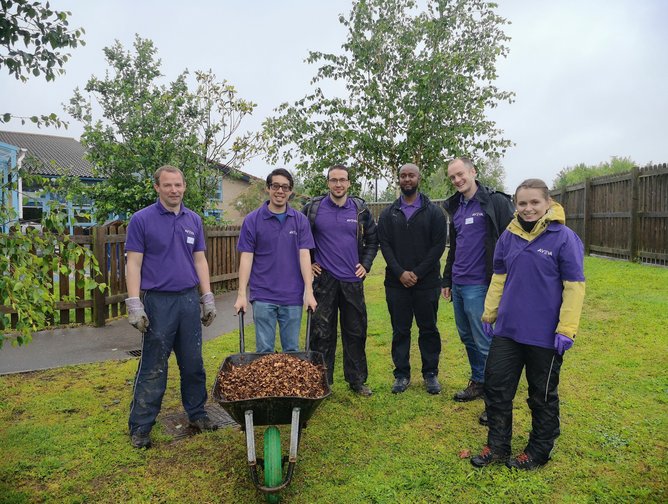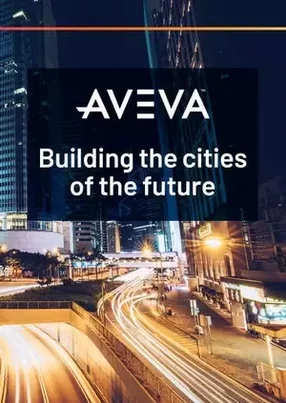The demand for the modernization of city infrastructure has never been higher. In this everchanging climate, AVEVA has been tasked with establishing smart solutions to modern problems in Asia’s cities and businesses by using integrated data technology to unify sectors of a business or city. Sayaji Shinde heads up the programme as the Business Head of Smart City, Smart Infrastructure and Smart Water.
“Over the past few decades, industries have been investing heavily in digitalisation of operations, process and stakeholder engagements,” he explains. “Sectors like banking, telecommunication, manufacturing and retail have transformed their business using the latest technology and trends, to achieve higher operational efficacies reduce cost and improve profits.”
A recent digitalisation trend in infrastructure industry has been the implementation of solutions that deal with an individual department problem, independent from the bigger picture. Dubbed silo solutions, this methodology of tackling these operational inefficiencies on an individual department or operation basis can produce complications down the line. Gaps in deployed silo solutions across the variety of domains may give rise to human errors, as information becomes fragmented between an organisation’s various departments.
The operations involved in airports, sea ports, railways, metros, cities, water systems, tunnels and townships must realise the need to develop their road map for digital transformation to unify their approach to problem solving, as Sayaji explains: “The approach needed for the digital transformation of infrastructure is very different than the rest of the industries, as infrastructure is typically operated with the help of engineering technologies and IT. Many IT companies are trying to offer solutions, however, their offerings exhibit a lack of understanding, experience and capability to leverage the engineering technology.”
Digital transformation of smart infrastructure requires some degree of automation to be in place. The journey can be much easier to achieve if an organisation has invested in automation layers to help leap-frog into more advanced capabilities. Technologies such as Internet of things (IoT), big data analytics and AI grant a level of technological maturity that allows bigger steps into automating people-driven processes and collating information from multiple sectors in real time.
Sayaji explains: “City operations are managed through departments which are independent of each other and do not allow city authorities to manage their interdepended functions, for example, if road repair work is supposed to be taken up by public departments, the information for this activity may not be shared with traffic departments in advance. ”To aid in the digital transformation of a partner, AVEVA has developed the “Unified Operations Centre” (UOC) a platform technology that helps reduce the cost of a project and ensures successful delivery of the transformational project. The system allows for visibility, navigation and manipulation of infrastructure creating a command centre from which a business can see and interact with the activity across its various domains. AVEVA has also integrated a ‘train the trainer’ programme, which allows customers to have an internal coach for their users. Of the programme, Sayaji says “what matters is the ‘ease of use’ and ‘empowerment’ of the users with adequate information to act, which can reduce their workload while increasing overall efficiency.”
Naturally, such complex projects involve close collaboration with leading partners. Sayaji notes that AVEVA defines its partners through two categories: “Prime bidders, such as cities, where the partner needs assurance of the successful delivery through guidance of the technological differences of the offered solutions.” The second partners, he adds, are “solution vendors like intelligent traffic management, CCTV surveillance, water and energy systems. We work with them to produce integrated solutions to in our data platforms.”
The UOC is a large component of the company’s ‘city in a box’ project. The platform enhances the capabilities of the silo solutions, implemented in the early stages of transformation, by seamlessly integrating these solutions to manage departments across a unified platform. “UOC allows conversion of IT, OT (operational technology) and IoT applications, centralising the operations and managing critical incidences and events and collaborate between departments electronically to achieve higher-level efficiencies by leveraging existing investments,” says Sayaji. This gives users the power to control their infrastructure through mobile devices, visibility and geographic information system (GIS) mapping, to give the visualisation of data through 3D mapping work sites.
As well as reducing costs, these technologies can also contribute to sustainability through the optimisation of resource expenditure and control, such as fuel, energy, water and workforce. This is all made possible because users are being given access to information in real time through the transformation and can lead to easy analysis of behaviours in both the physical infrastructure and human action. This data gives actionable intelligence at a glance. To give examples of the practical applications of this technology, Sayaji says “in the case of traffic management, if roads are wired with sensors the data collected about average speed and the volume of vehicles across the stretch of road gives visibility of the traffic pattern through the day. This data can then, not only, be used to manage traffic signal timings but make infrastructure decisions of whether to build a flyover at a junction or just widen the curvature of the road.”
The definition of “what is smart” is can be a grey area for industry. The concept of digital transformation is constantly evolving to encompass new frontiers without much of a framework and, by designing a transformational approach that can progress with the birth of new technologies, we can alleviate unnecessary expenditure and target change towards a more focused outcome, Sayaji believes. Despite potential challenges, Sayaji is confident that the business can continue to grow: “Within the past two years, AVEVA has secured five smart city deals and now we are venturing in other areas like airports, sea ports, facility management and data centres.”




- Top 100 Women 2024: Tanja Rueckert, Bosch - No. 6Digital Transformation
- Coforge: Arming Financial Firms with the Tools to InnovateDigital Transformation
- Coforge: Arming Financial Firms with the Tools to InnovateDigital Transformation
- MWC24: Harnessing AI to Modernise Telcos with Tech MahindraDigital Transformation

